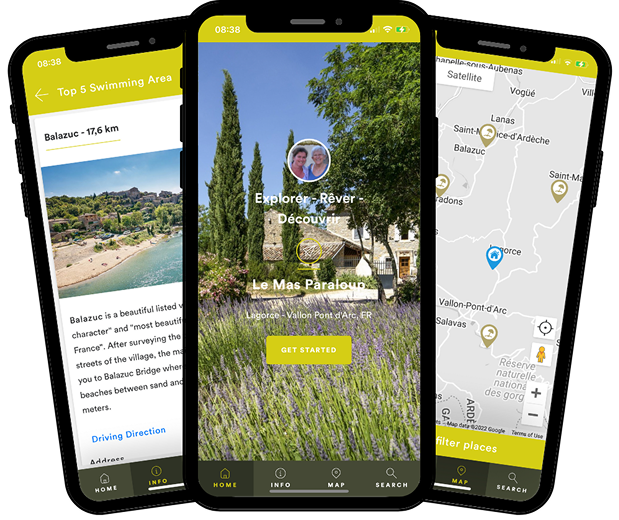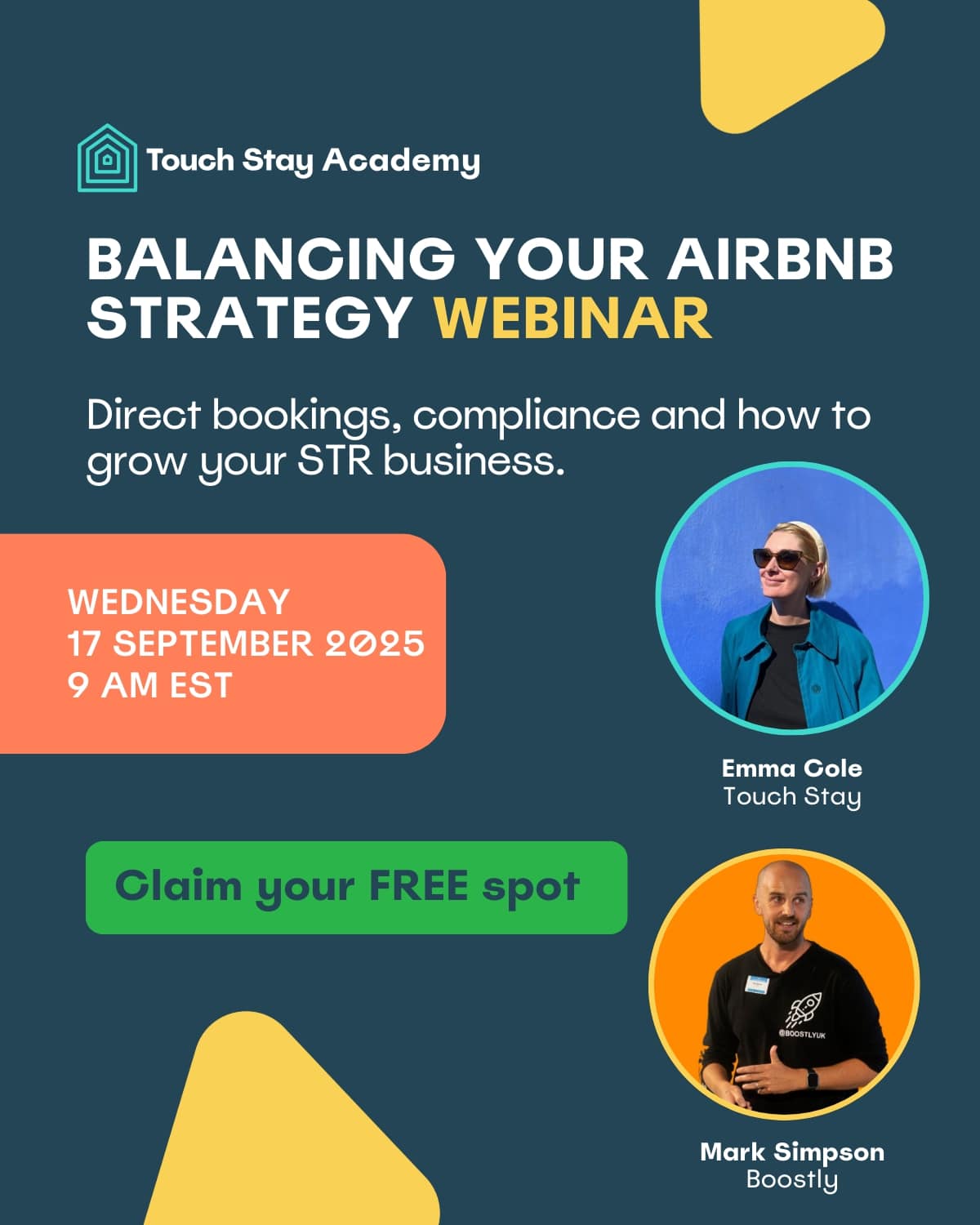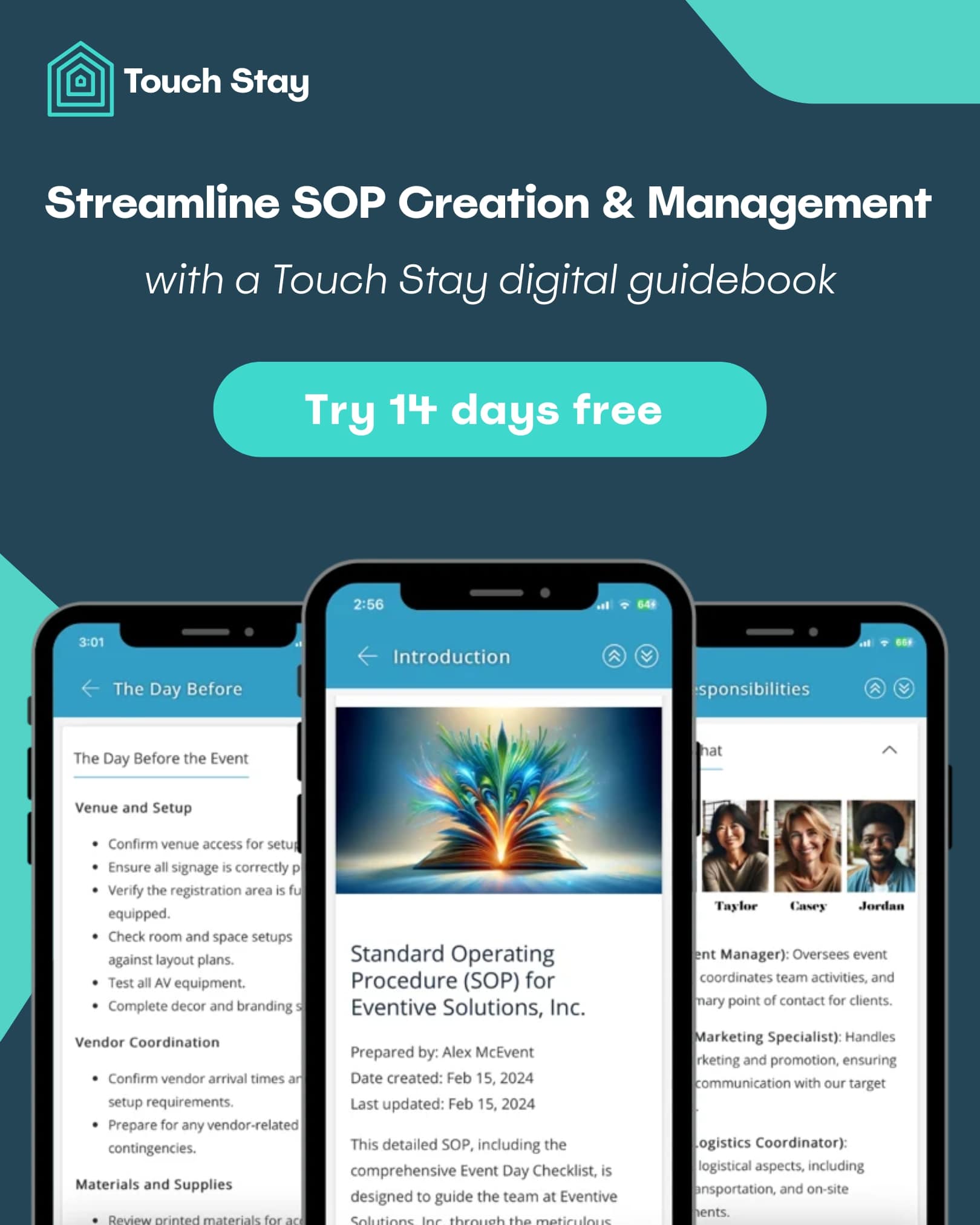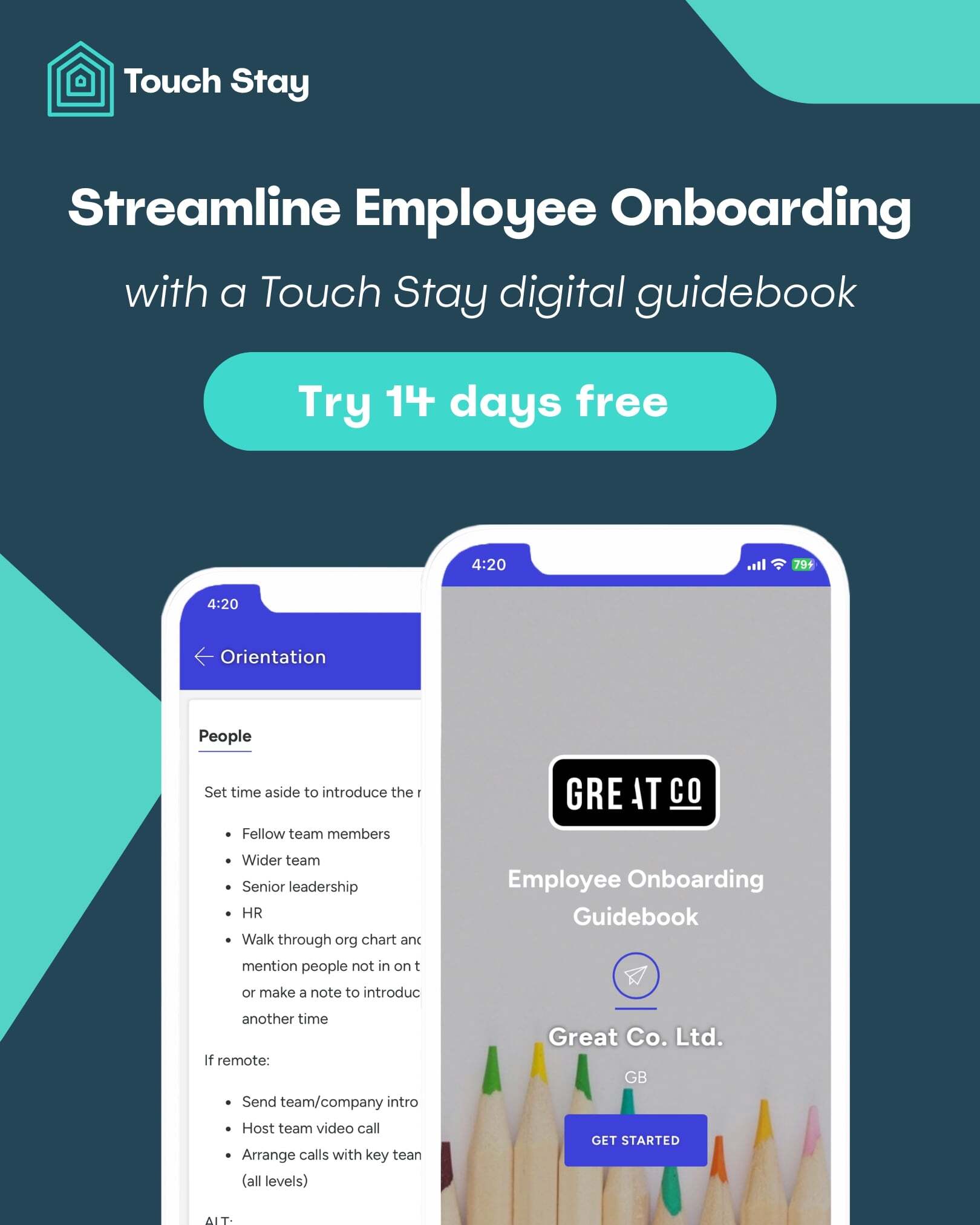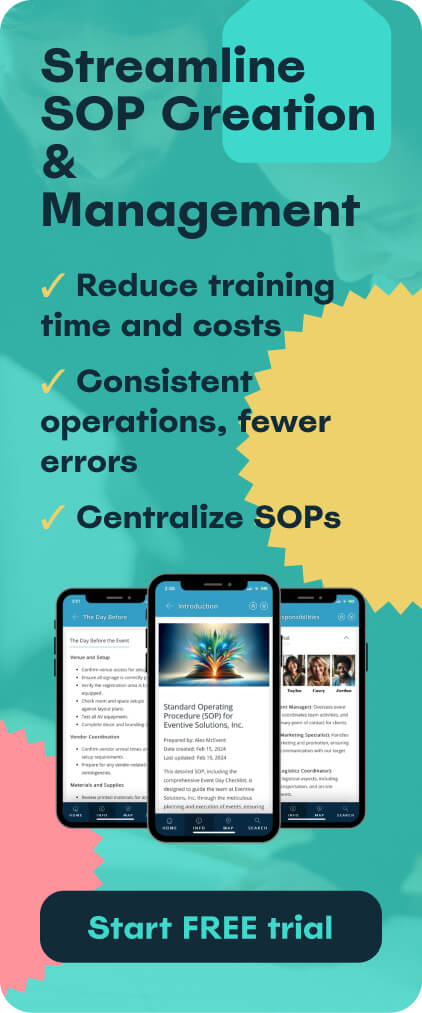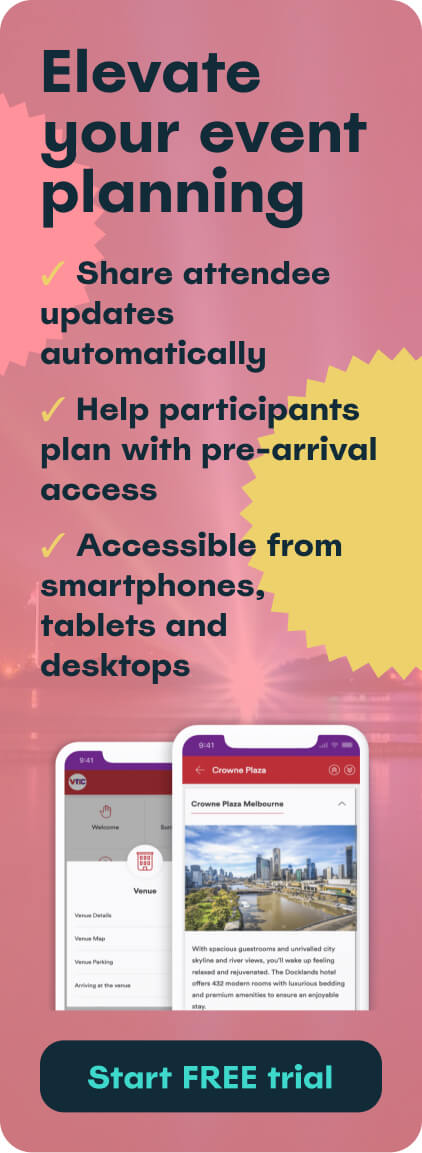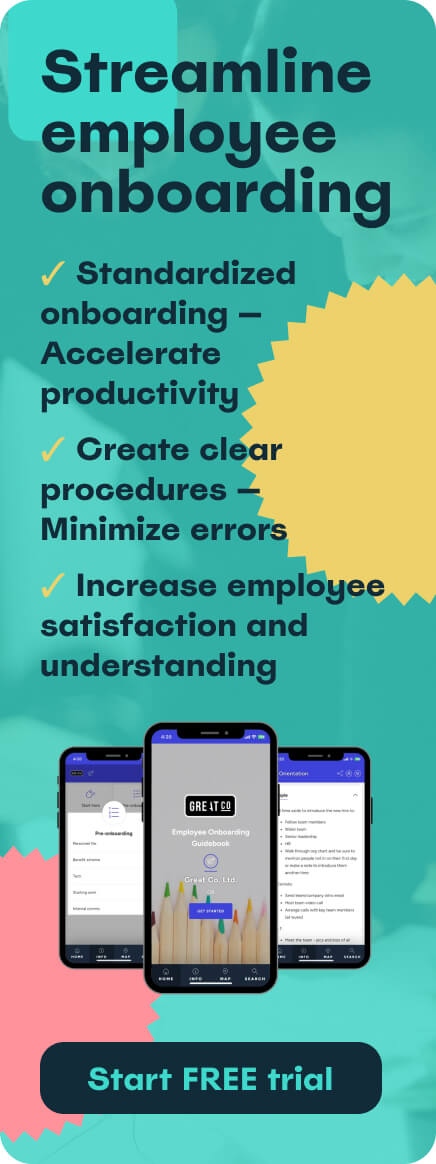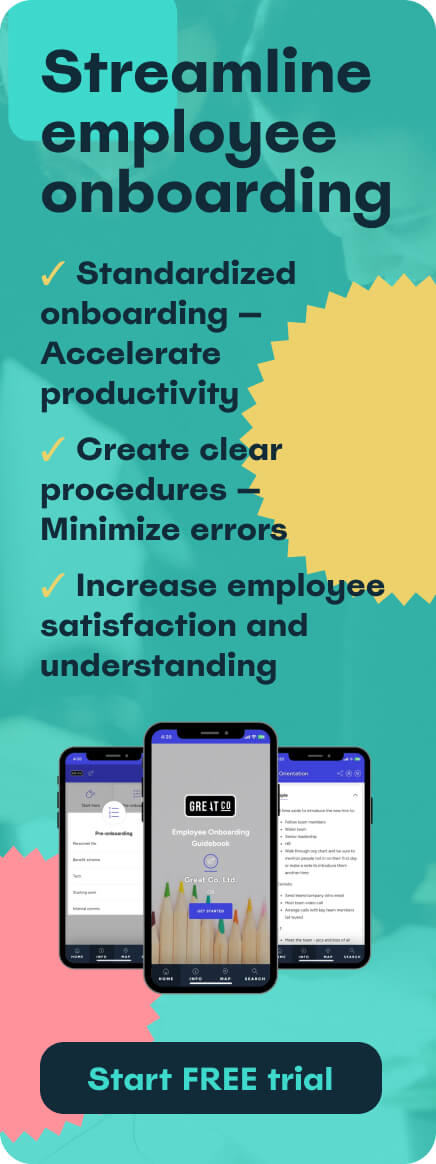Whether you're a seasoned HR professional or a new manager, understanding the importance of the employee onboarding process is crucial. It's not just about filling out paperwork or giving a tour of the office; it's a strategic process that sets the stage for a new employee's success.
In this article, we'll delve into the 4 core onboarding phases, each with its own objectives and strategies. By the end, you'll have a comprehensive understanding of how to create the best onboarding experience for your new hires, setting them up for success from day one, and building the foundations of a strong, long-standing working relationship.
Make onboarding easy with a simple checklist.
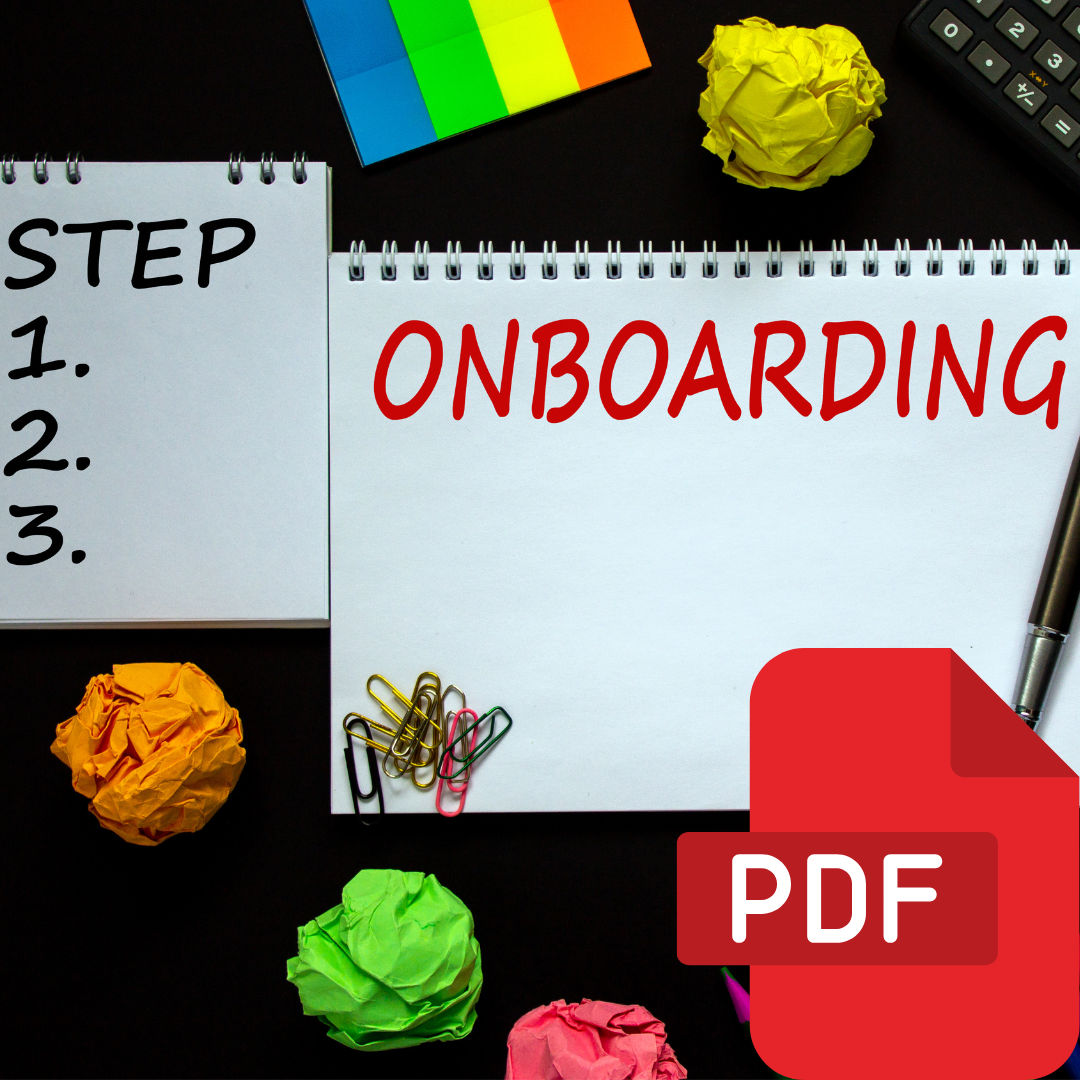
Download your free employee onboarding checklist
What is onboarding?
Onboarding is more than just a buzzword in the working world, it's a crucial process that sets the stage for a new employee's journey within a company and works to successfully integrate them into the company culture.
The employee onboarding process can be broken down into a series of stages, often referred to as the 4 phases of onboarding. This begins before the new hire's first day and is about more than just paperwork and orientation; it's about creating the best onboarding experience possible.
A thorough employee onboarding process ensures that new hires feel welcomed, informed, and equipped to contribute effectively from day one. It's a strategic investment that pays off in numerous ways, including improved employee retention, engagement, and productivity. In fact, research suggests that organisations with a structured employee onboarding process saw a 60% year-on-year improvement in revenue.
When employees feel supported and valued during their onboarding phases, they are more likely to stay with the company long-term, be engaged in their work, and perform at their best. According to a Glassdoor survey, onboarding improves a company’s retention rate by 82% if conducted properly, highlighting the link between onboarding and employee retention.
This guide will delve deeper into the best practices for onboarding new employees, but the process generally involves providing clear expectations, offering ongoing support, and fostering a sense of belonging. Essentially, ensuring that the 4 phases of onboarding are well-developed and thorough is a critical part of building a strong employee onboarding plan, and a successful team long-term.
The 4 phases of onboarding
Onboarding isn't just a one-day event, it's a process that unfolds over time, designed to integrate employees within a company for the long haul. So, how long does onboarding take?
Typically, onboarding is a multi-month process. Most HR professionals suggest onboarding should be at least a 3-month long process, with proper integration and development taking up to a year depending on the role and size of the company.
The employee onboarding process should ideally consist of four thorough phases: pre-boarding, orientation, training, and integration. Each phase complements one another to create the best onboarding experience possible.
Preboarding sets expectations and builds excitement. Orientation introduces company culture and policies. Training equips employees with job-specific skills. Integration fosters relationships and a sense of belonging.
These stages of onboarding ensure that new hires are set up for success and feel valued from the get-go. In the following sections, we will break down the onboarding phases in detail, covering the objectives, key activities, best practices, and potential challenges with solutions for each stage.
Phase 1: preboarding
Preboarding is the initial phase of the employee onboarding process, and it's a vital step in ensuring that new hires feel welcomed and prepared for their first day. This phase typically begins after the job offer is accepted and before the new employee’s first day.
The objectives of this onboarding phase are to make the new hire feel prepared, welcome, reduce first-day anxiety, and streamline administrative tasks.
One of the key activities during preboarding is completing the necessary paperwork. This includes filling out tax and banking details, signing their employment contract, and providing emergency contact information. By taking care of these admin tasks ahead of time, companies can ensure that the new hire's first day is focused on getting to know the team and learning about the company culture.
Another important aspect of preboarding is providing essential information about the first day. Companies should do whatever they can to alleviate any stress for the new hire so they feel prepared; this includes details about where to park, what time to arrive, who they’ll be meeting upon arrival, information about the dress code, any required training, and what to expect during the first week.
Putting this information together in a personalised welcome email is a good way to make a good first impression. Additionally, companies may want to think about sending a welcome package with branded merchandise such as sweet treats, a mug, or a mouse pad with your logo on it, to build excitement.
In addition to paperwork and information, this onboarding phase also involves granting access to online portals or resources. This could include setting up the new hire's email account, providing access to the company handbook, and giving them login information for any necessary software or tools. By providing access to these resources early on, companies can ensure that new hires can hit the ground running, even in the earliest stages of onboarding.
Preboarding is very important in the 4 phases of onboarding, so it may shock you to learn that 64% of new hires receive no preboarding experience. By focusing on making new hires feel welcome and prepared, companies can set the stage for the best onboarding experience where new employees feel like they are a valued part of the team from day one.
Phase 2: welcoming and orientation
Orientation is the second stage of the 4 phases of onboarding, and it's all about introducing new employees to the company and setting them up for success. This phase typically covers the first day or week of employment.
The objectives of orientation are to familiarise new employees with the company culture, policies, and their role within the company.
Key activities during orientation include office tours, presentations on company policies and culture, initial training sessions, assigning buddies or mentors, and completing onboarding tasks like 'get to know me' profiles. These activities help new employees feel welcomed and informed, providing a good foundation for success in their new role and creating the best onboarding experience from the start.
One of the challenges in this onboarding phase is information overload. New employees are often bombarded with a lot of information in a short amount of time, which can be overwhelming. To address this challenge, companies can spread orientation over several days or use engaging formats like interactive workshops or games.
It’s also a good idea to store all of this information in one place, such as a virtual guidebook. By using a variety of mediums and adding links and resources to a virtual guidebook, you can create a super engaging resource which is easily accessible to new employees and something they can constantly refer back to. This allows new employees to absorb the information at a more manageable pace and makes the orientation process more enjoyable.
Another challenge of orientation is ensuring that new employees feel connected to the company and their colleagues, especially for individuals who may be more reserved. Assigning buddies or mentors can help new employees feel supported and provide them with someone to turn to for guidance and advice, no matter the question. The fact that 86% of new hires appreciate support from an onboarding buddy is a testament to this.
Additionally, completing onboarding tasks like 'get-to-know-me' profiles can help new employees share information about themselves and their interests with their colleagues, fostering connections and relationships which is a crucial part of the initial stages of onboarding.
Phase 3: role-specific training
Role-specific training is the third phase of the core stages of onboarding and includes providing new hires with the skills and knowledge they need to excel in their specific job roles. This onboarding phase typically begins after orientation and continues for several weeks or months, depending on the complexity of the role.
The objectives of role-specific training are to equip new hires with the necessary skills and confidence for their specific role, ensuring that they can perform their job duties effectively and contribute to the success of the organisation early on. The fact that 23% of employees who quit within 6 months attribute it to a lack of clear guidelines on their responsibilities highlights the importance of role-specific training. This is not only productive for the organisation, but is also a good morale booster for new hires if they can make impactful contributions from the very beginning of the employee onboarding process.
Key activities during this onboarding phase include job-specific training programs, mentorship assignments, and hands-on projects. These activities help new hires gain practical experience and apply what they've learned in a real-world setting.
One of the best practices for role-specific training is to create personalised training plans for each new hire. This ensures that they receive the training and support they need to succeed in their specific role.
As this is such an important part of the 4 phases of onboarding, companies should consider running regular feedback sessions in tandem with training. During these, you can set clear milestones for performance which helps new hires track their progress, stay motivated and evaluate how effective training sessions are.
Another way to maximise the benefits of role-specific training is to provide opportunities for new hires to learn from experienced employees. This could include assigning them a mentor or buddy who can provide guidance and support, or involving them in team projects where they can learn from their colleagues.
Phase 4: integration and ongoing development
Integration and ongoing development mark the final phase of the 4 phases of onboarding and consist of ensuring new hires are fully integrated into the company and set up for long-term success. This phase typically begins a few months into the job, once the new hire has had time to settle in and start working independently.
The objectives of integration and ongoing development are to assess the new hire's fit and performance within the organisation, and ensure their ongoing development and growth are on the right path.
Key activities during this onboarding stage include performance evaluations, feedback meetings, and goal setting for future development. These activities help new hires understand how they are performing in their role, and provide them with the feedback and support they need to continue to grow and develop. It also goes a long way in making new hires feel valued; research shows that 94% of employees would stay at a company longer if it invested in their career development.
One of the challenges of this onboarding phase is adjusting to the role and the company culture. New hires may still be getting used to their new responsibilities and the way things are done at the company.
To address this challenge, companies can provide continuous support and set realistic expectations for new hires, potentially by implementing quarterly coaching sessions with senior management. This can help them feel valued, more confident and comfortable in their role, and ensure that they are set up for success in the long term.
Summary
The employee onboarding process is a vital component of fostering a positive and productive work environment. By understanding and implementing the 4 phases of onboarding effectively, companies can significantly enhance and create the best onboarding experience possible.
From preboarding to integration and ongoing development, each phase plays a crucial role in setting new employees up for success and contributing to overall organisational success. Investing in robust onboarding programs not only helps new hires acclimate quickly but also fosters a sense of belonging and engagement.
It's essential for organisations to continuously evaluate and improve their onboarding phases to adapt to changing workforce dynamics and ensure that they are providing the best onboarding experience for their new employees. Ultimately, a strong employee onboarding process lays the foundation for long-term employee satisfaction, retention, and success.
At Touch Stay, our digital guidebooks can be used to create comprehensive and user-friendly onboarding resources that will help aid all 4 phases of onboarding.
Start your free trial now to see how you can create an onboarding resource that will revolutionise the way new employees are integrated into your company.

Ned
Ned has clocked up over 11 years in digital marketing and comms, with a strong focus on creating engaging content for a range of brands and agencies. When he’s not writing, he can be found digging for records, peering through his telescope at the night sky, or onboard his local lifeboat where he volunteers as a crewmember.
Be the first to know!
Join our newsletter for early access to:
- ✅ Free guides
- ✅ Pro tips & tricks
- ✅ Time saving tutorials
- ✅ Latest blog posts
- ✅ Checklists & templates

